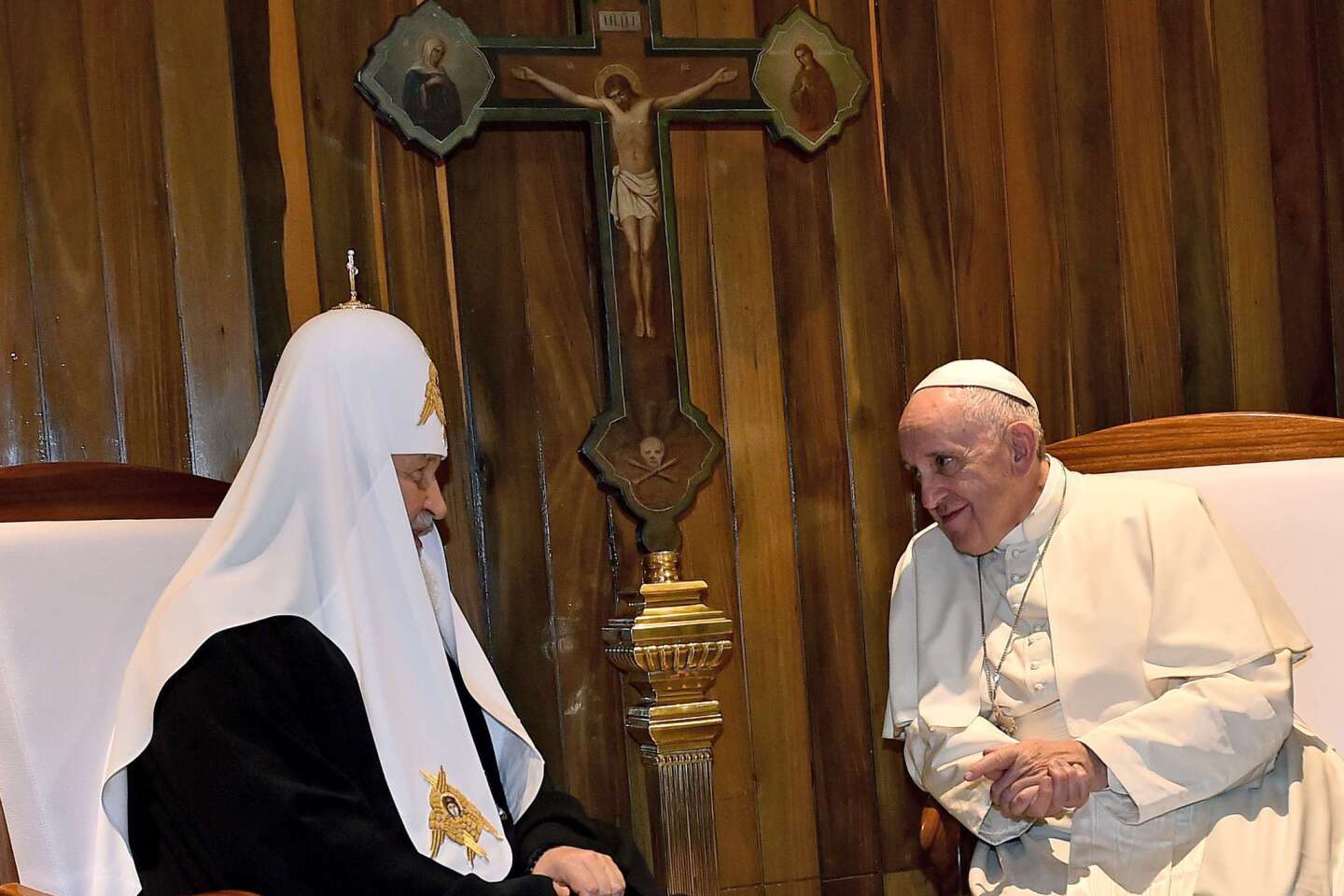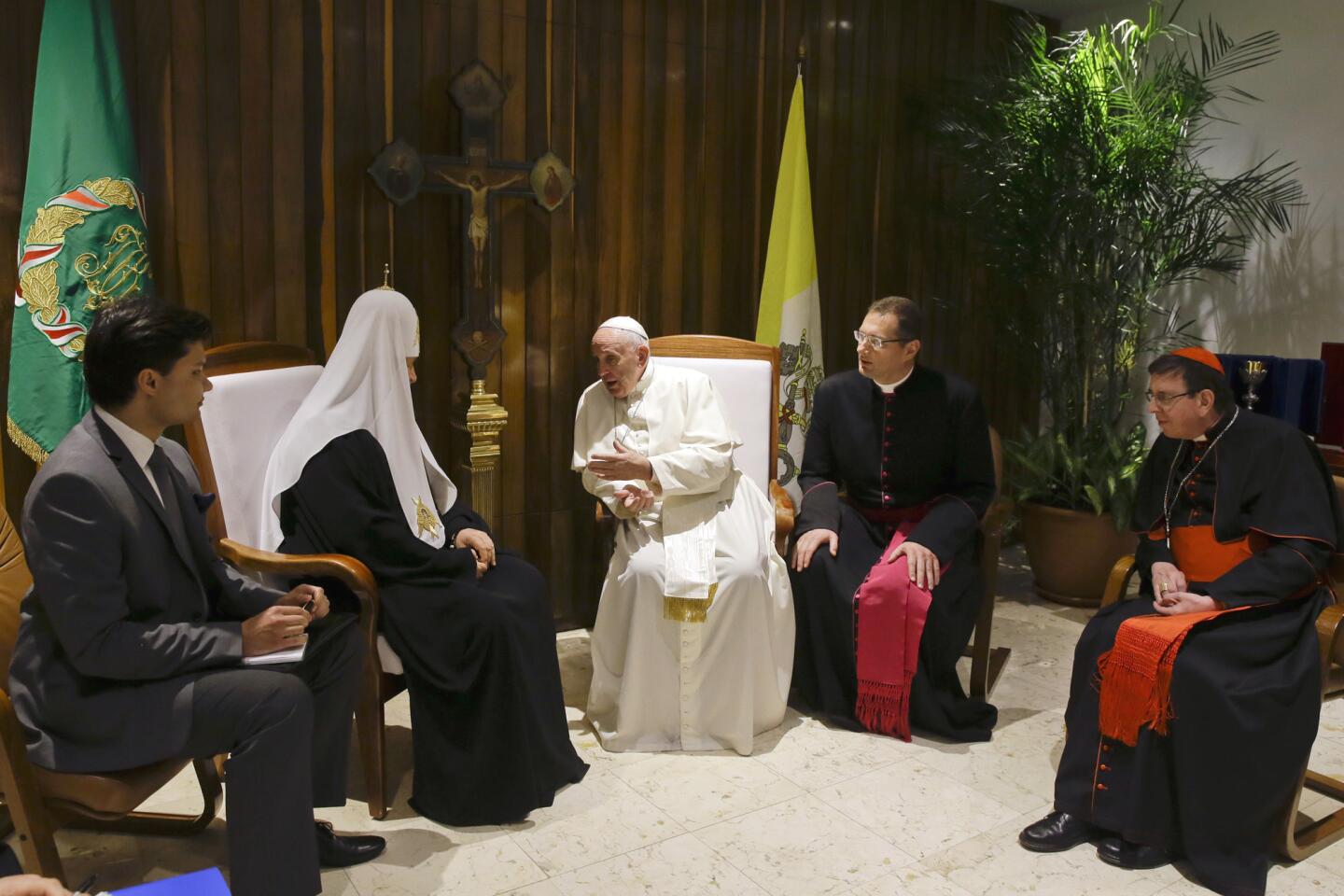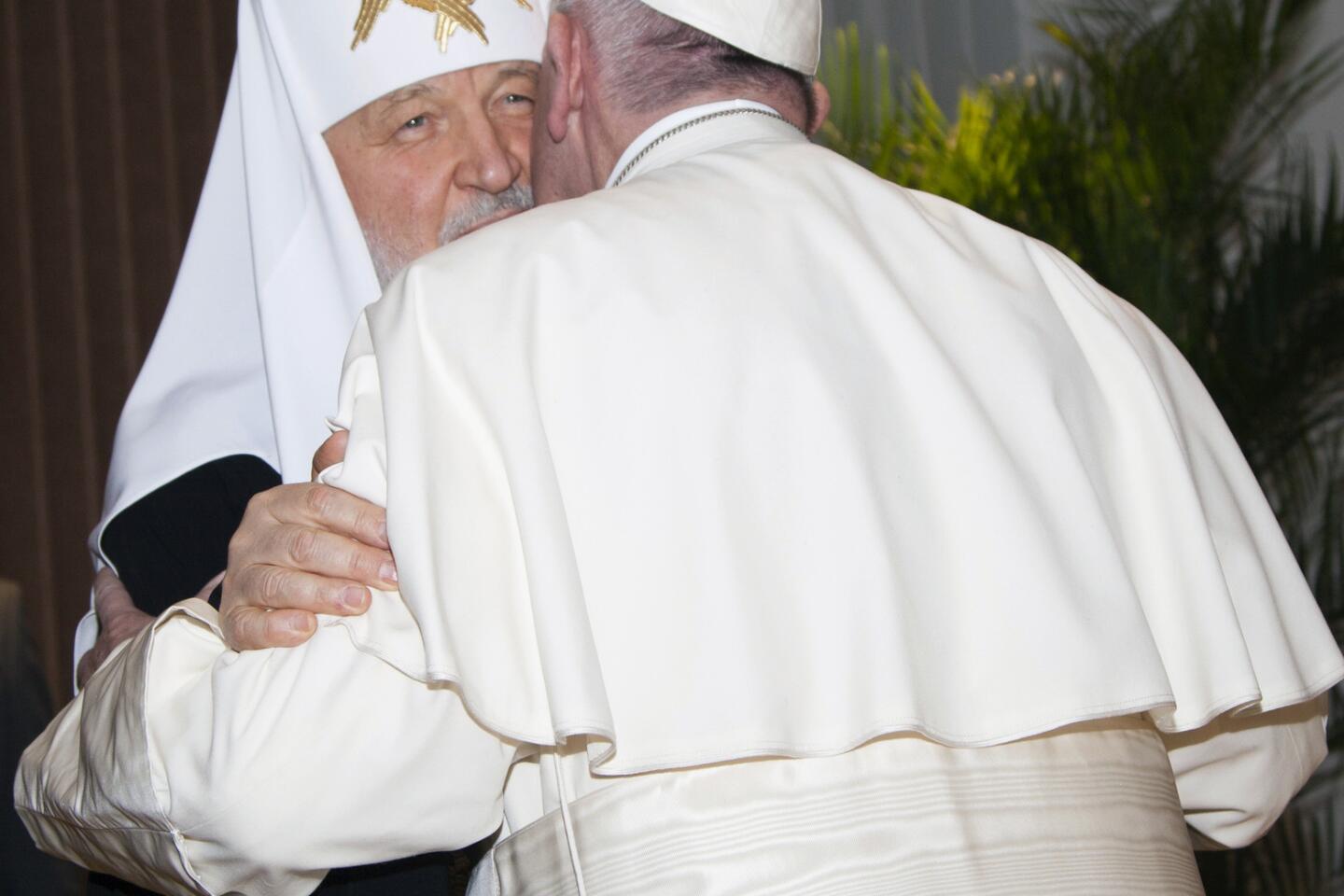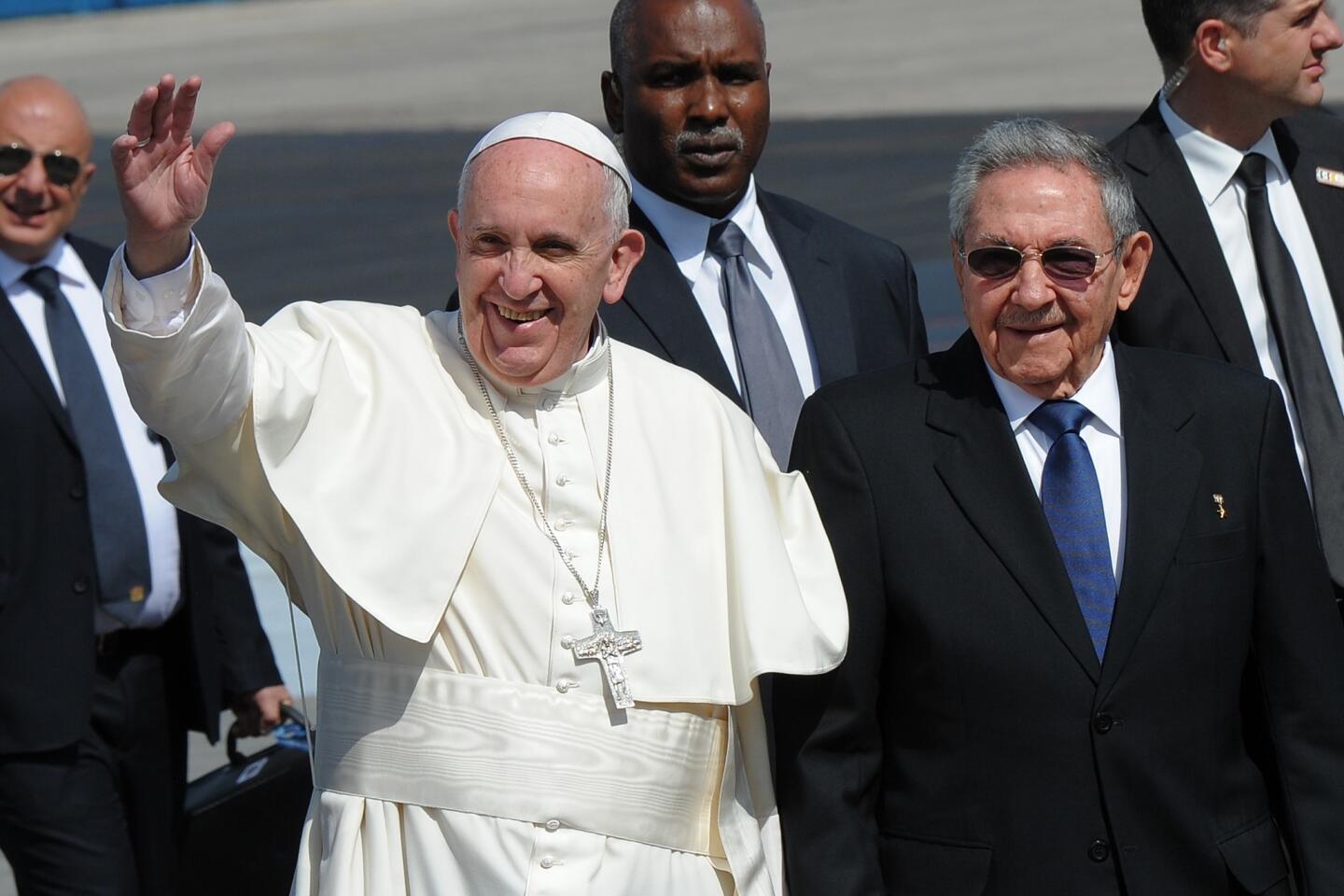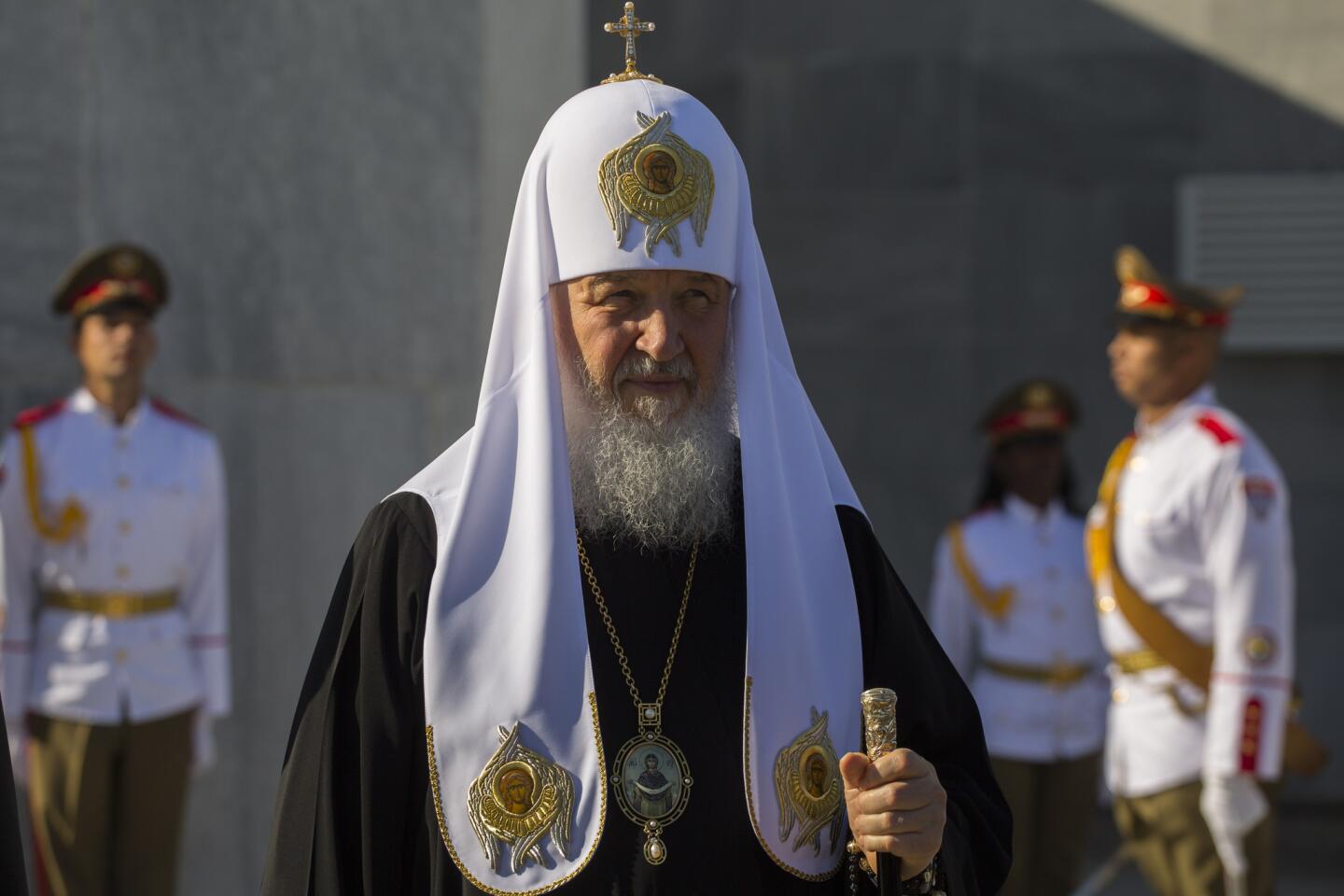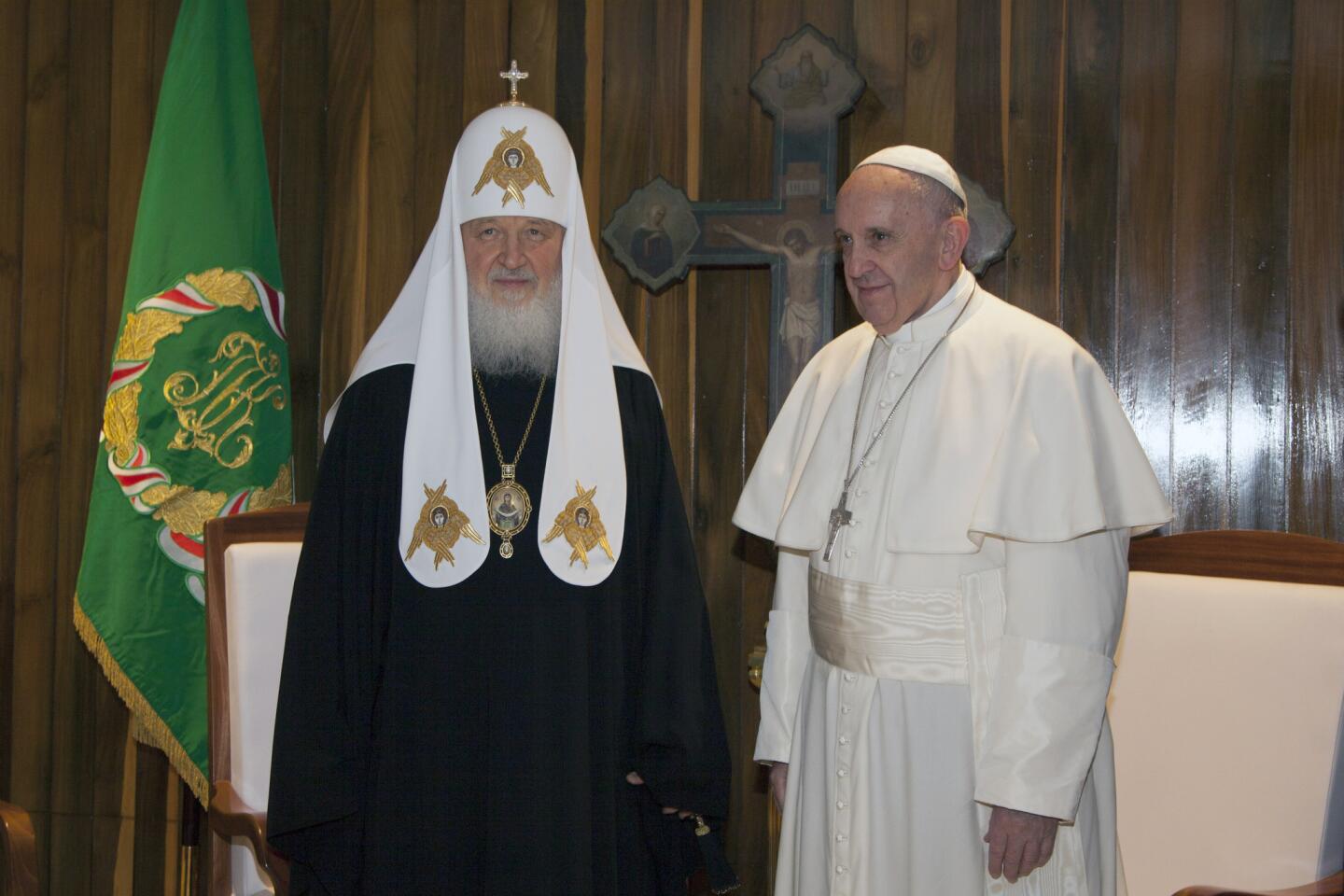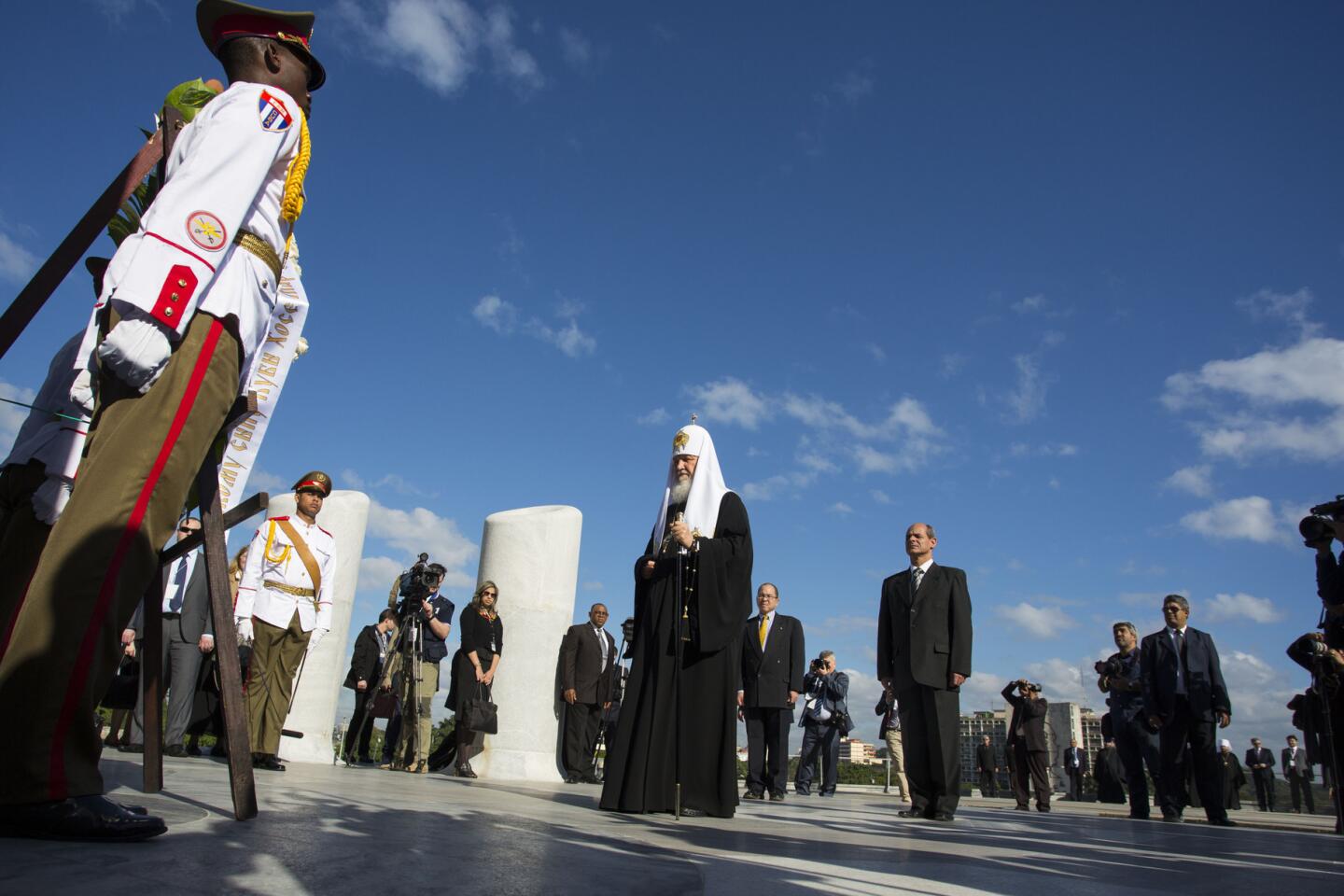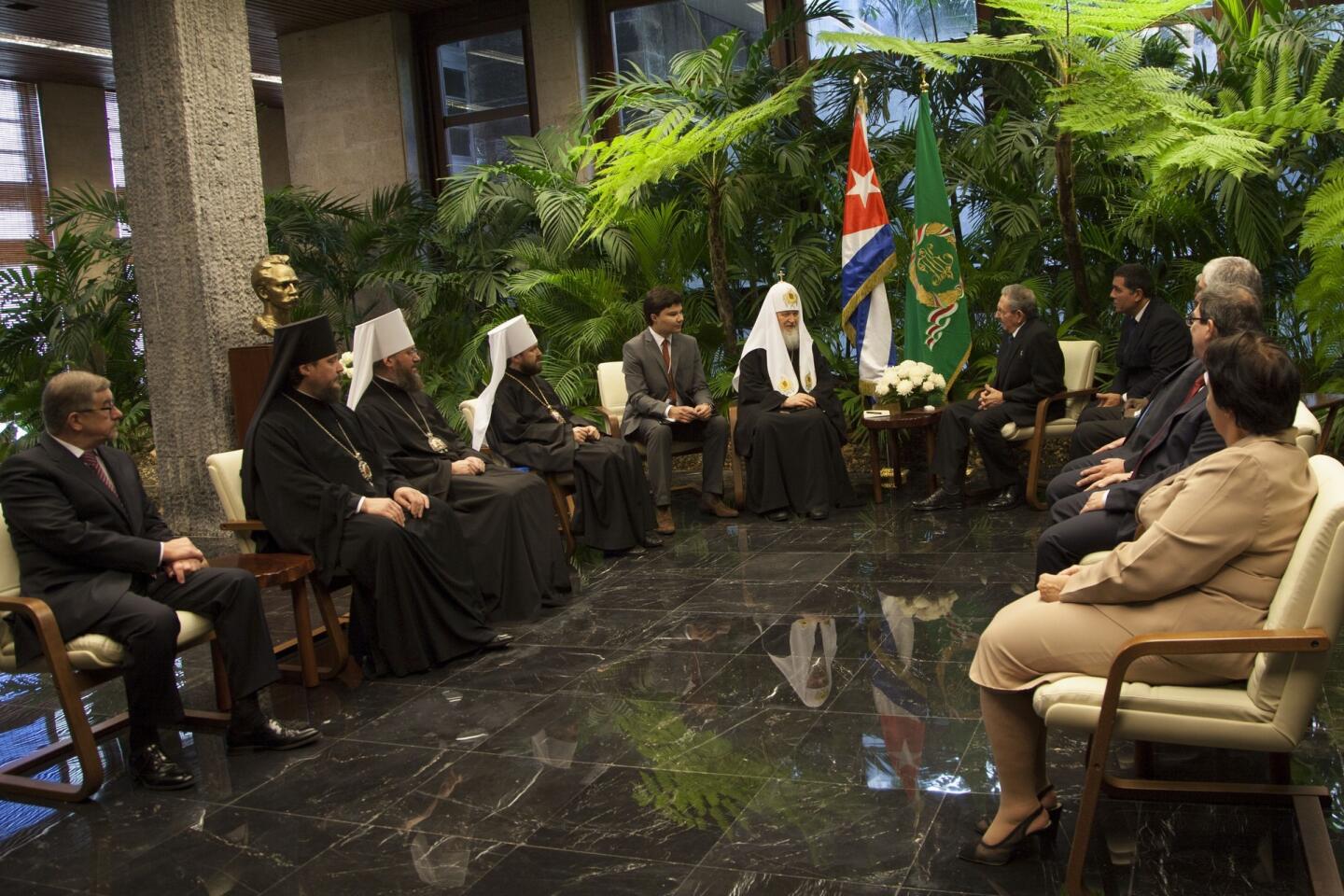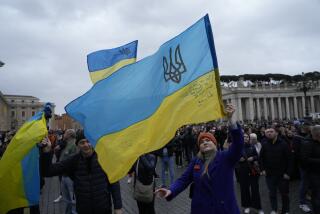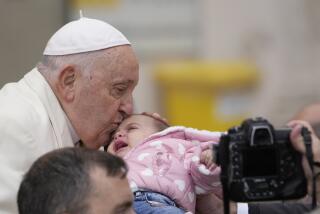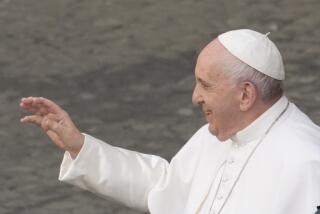‘Finally, brother,’ Pope Francis says in historic meeting with Russian Orthodox patriarch
Pope Francis on Friday crossed the Atlantic Ocean and then a millennium of division and distrust when he traveled to Cuba and met with the patriarch of the Russian Orthodox Church.
It was the first encounter ever between the heads of two of the largest branches of the Christian faith, whose estrangement for 1,000 years represents the deepest East-West divide in Christianity.
It came about partly to draw urgent attention to the increasingly dire plight of Christians of all stripes in the Middle East and Africa, where they are being murdered and displaced by Islamic fundamentalists.
Cuban President Raul Castro received Francis after his plane touched down; shortly thereafter, the pope and Patriarch Kirill of Moscow and All Russia began their meeting with an embrace, three kisses on their cheeks, and then settled into large side-by-side chairs.
“Finally, brother,” Francis said to Kirill, bearded and dressed in flowing black robes.
After the 2 1/2-hour meeting, both said they had talks about unity and their responsibility for “the future of Christianity and of civilization itself,” as Kirill, speaking in Russian, put it.
“We spoke as brothers. We share the same baptism. We are both bishops,” Francis said, speaking in Spanish and addressing the patriarch as “your holiness.”
Afterward, Pope Francis continued his trip to Mexico City, where he will spend nearly a week symbolically tracing the path of migrants and bringing comfort to an overwhelmingly Roman Catholic Mexican population besieged by violence, drug war and official corruption.
The first pontiff from the Americas has made rapprochement a cornerstone of his three-year-old papacy, and mending rifts among Christians is key to that mission.
“The pope is nurturing a culture of encounter and dialogue,” said the Rev. Jean-Pierre Ruiz, associate professor of theology and religious studies at St. John’s University in New York. “He wants to show that this is really the only alternative to the adversarial relationship that leads to conflict.”
The Russian patriarch’s motives, however, may be more complicated. Serious disputes remain between the two religions, including the primacy of the pope. It is widely assumed that Kirill would not have agreed to the meeting without the approval, perhaps even the urging, of Russian President Vladimir Putin, who has largely coopted the church to his political needs.
The Russian church may be hoping to give a boost to Putin at a time when he is facing ostracizing and bitter criticism by much of the West because of Moscow’s military operations in Syria, Ukraine and elsewhere.
“To have the Roman pope, with his internationally recognized authority, not as a critic but as an ally or at least simply as a neutrally silent figure, is highly attractive to Putin and his associates,” said Yury Avvakumov, a professor of theology at the University of Notre Dame and specialist in Russian and Ukrainian theology.
MORE: Get our best stories in your Facebook feed >>
“The Moscow Patriarchate has always been an instrument of Russian international policy. Today … [it] remains an effective transmitter worldwide of the political interests of the Russian rulers.”
The rivalry between Roman Catholicism and Orthodoxy dates to the early centuries of Christianity as it spread across the Roman Empire, with Latin rites dominating Europe, while Greek-speaking clerics moving eastward from what is today Turkey. Eventually states throughout the Byzantine Empire, from the Balkans all the way to the far reaches of Russia, had Orthodox patriarchs.
By the 11th century, the rivalry had become bitter and at times violent. In 1054, in what is known as the Great Schism, the Catholic Church loyal to the pope in Rome split from the Orthodox Church, led by the patriarch in what was then Constantinople. Pope Leo IX and Patriarch Michael Cerularius issued mutual excommunications, and the division was complete.
At the heart of the dispute was papal primacy — the idea that the pope be considered a sort of supreme leader of all Christians — as well as doctrinal disagreements. Even today, the churches have different practices. Roman Catholic priests, for example, take a vow of celibacy, while Orthodox churches allowed married men to be ordained into the priesthood.
Over the centuries that followed, Orthodox churches often became allied with governments or with nationalistic causes. Hence, the Russian Orthodox Church’s close ties with Putin. During the Balkan wars of the 1990s, it was not unusual to see Serbian Orthodox priests in the battlefield blessing Serbian troops.
There have been periodic, usually thwarted efforts to heal the schism. The first most successful step came in 1964, when Pope Paul VI and Patriarch Athenagoras of Constantinople (now Istanbul) visited Jerusalem together and, the following year, lifted the excommunications.
That allowed significant progress in relations between the Roman Catholic Church and the Greek Orthodox Church. Leaders attended the others’ religious holiday ceremonies, and current Patriarch Bartholomew I of Istanbul, “first among equals” of the Orthodox patriarchs, has had friendly ties with Francis and his predecessor, Pope Benedict XVI.
The Russians have always kept their distance, however, and détente only soured in the 1990s with the fall of the Soviet Union, which opened Russia to other faiths and, in the Russian Orthodox view, unwanted proselytizing.
NEWSLETTER: Get the day’s top headlines from Times Editor Davan Maharaj >>
“For years, they’ve talked about this, and come close a couple of times,” said the Rev. Ron Roberson, who handles ecumenical affairs for the U.S. Conference of Catholic Bishops. “All along, the Catholics were more positive than the Russians. The Russians kept saying more issues needed to be resolved for any meeting to be fruitful.”
A key problem were the Catholic churches that maintained Eastern rites and, in one case, were particularly active in Ukraine. While the Vatican insisted they were merely ministering to small Catholic communities in Ukraine, the Russian Orthodox Church accused them of stealing converts.
Even as it joined the Vatican last week in announcing Friday’s historic meeting, the Russian Orthodox Church cited the Roman Catholic churches in Ukraine as a “never-healing, bleeding wound that prevents full normalization of relations” between the two faiths.
The Russian Orthodox Church became especially politicized under Putin. He used the church to bulk up his standing at home, portraying himself as pious while using the church to crush dissent through laws that punished those who had purportedly offended the church but who in fact were being critical of the Russian leadership. Putin also met with Francis, in another effort to erode his isolation by the West; he may see reconciliation between the churches as another step in his positioning as a world power to be respected.
Around two-thirds of the world’s Orthodox Christians, roughly 200 million people, belong to the Russian church, making it the largest as well as the wealthiest. The Roman Catholic Church claims 1.2 billion adherents worldwide.
The selection of Cuba as the venue for Friday’s meeting also spoke volumes. Far from both Rome and Moscow, a “neutral” territory that is nevertheless of special importance to both sides, the communist-ruled island is officially atheistic. But it has been trying to burnish a reputation of late as being more tolerant of religious practices, and of importance to the world of diplomacy.
Francis was instrumental in bringing Washington and Havana together to agree to restore diplomatic ties in late 2014 after a half-century of animosity. And Cuba, once a client state of the Soviet Union, continues to have close ties to Russia.
After years of attempting to make Friday’s meeting come about, the schedules of the two religious leaders coincided, with Kirill on a previously scheduled tour of Latin America and Francis on his way to Mexico, Vatican officials said.
After 1,000 years, Roberson said, “It was the right place, the right time.”
Twitter: @TracyKWilkinson
ALSO
Live coverage: Trump calls Pope Francis’ Mexico trip political
L.A. man traveling with Pope Francis will offer a simple gift - a shoeshine box
How the Virgin of Guadalupe embodied Mexican identity and inspired millions, including Pope Francis
More to Read
Sign up for Essential California
The most important California stories and recommendations in your inbox every morning.
You may occasionally receive promotional content from the Los Angeles Times.
